LockheedMartin
Latest

NASA wants to send humans aboard the first SLS flight
The first Space Launch System flight scheduled for 2018 was supposed to be unmanned, designed to test the new rocket and its companion Orion capsule. But now NASA has grander plans for its maiden flight: acting administrator Robert M. Lightfoot Jr. has announced that the agency is considering adding a crew on board. While authorities already expect the SLS debut to be delayed by a year, its first manned flight wasn't supposed to take place until 2021 at the earliest.
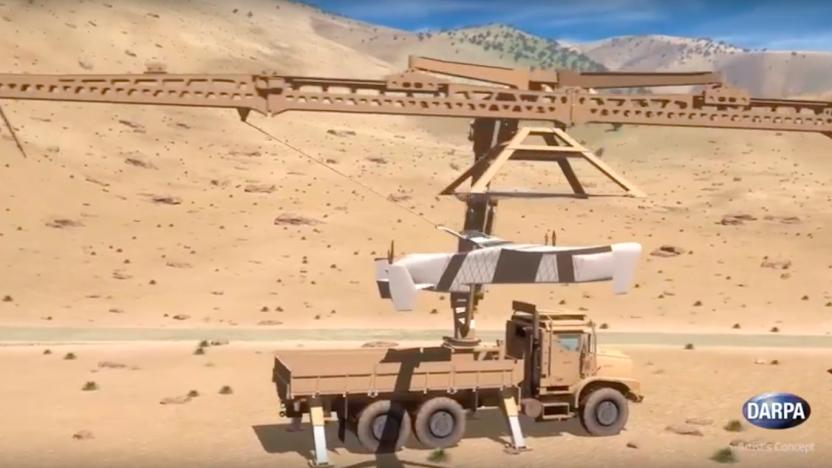
DARPA's SideArm system snares drones from mid-air
Even the longest-loitering drone needs to land sometime. But rather than risk damaging these multi-million dollar aircraft on improvised battlefield landing strips or aboard US Naval vessels, DARPA is developing a novel drone recovery system that snatches them out of mid-air.

Watch the US launch a next-gen weather satellite at 5:10PM ET
If all goes according to plan, the US is about to enter a new era of weather tracking. The United Launch Alliance is scheduled to launch the first instance of GOES-R (Geostationary Operational Environmental Satellite), the US' next-generation weather observer, at 5:40PM Eastern (live NASA coverage starts at 5:10PM). The new satellite not only captures sharper images width more wavelengths, but takes those snapshots at a much higher frequency that promises to change how meteorologists and climatologists track environmental conditions.

ICYMI: Wildland firefighting is about to get an AI assist
try{document.getElementById("aol-cms-player-1").style.display="none";}catch(e){}Today on In Case You Missed It: Lockheed Martin just demonstrated its AI aircraft system that can spot fires and put them out independent of human intervention, while also checking to see if any humans were left behind near danger. The system is supposed to be in service within five years. Researchers discovered that Goffin cockatoos are smart enough to make tools from various materials, judging how long and narrow they need to be each time to pass through a hole and also reach a treat. Meanwhile, if you're interested in the rapid repair of a sinkhole in Japan, the timelapse video is here. There have been a lot of interesting stories this week but people will be talking about the judge's decision to allow a dying girl to be cryogenically frozen for quite a while. As always, please share any interesting tech or science videos you find by using the #ICYMI hashtag on Twitter for @mskerryd.

Lockheed Martin's bioenergy plant turns waste into clean power
When it's not taking forever to deliver the F–35 or creating new blimp inspection drones, Lockheed Martin is hard at work finding ways to turn actual trash into useable clean energy. At its Owego, New York facility, where the company builds space-flight gear and military helicopters, the group has partnered with Germany-based Concord Blue to unveil a 250 kilowatt "advanced gasification plant" that will convert 3,650 tons of bio waste into electricity for the facility every year.

Lockheed Martin hopes to turn your kids into astronauts
Lockheed Martin knows that its future spacecraft will only fly if there are enough people interested in flying them, so it's trying something a bit unusual: it's helping to raise the next wave of astronauts. It's launching a Generation Beyond program that gives both parents and teachers the resources they need to get middle school kids (grades 6 through 8) excited about space-related science, engineering and math. The internet curriculum shows would-be spacefarers everything from the challenges of living in space (or on Mars) to the careers they can pursue in space exploration.

NASA will build full-scale deep space habitats on Earth
NASA is already preparing for humanity's journey into the great unknown, and part of its efforts is developing a suitable habitat for future spacefarers. In order to create a place where people can live outside our own planet, the agency has teamed up with six private corporations to build full-scale ground prototypes of the habitats they designed. NASA has chosen those six out of all the proposals it got for the second Next Space Technologies for Exploration Partnerships. And as you can see above, Boeing is one of them.
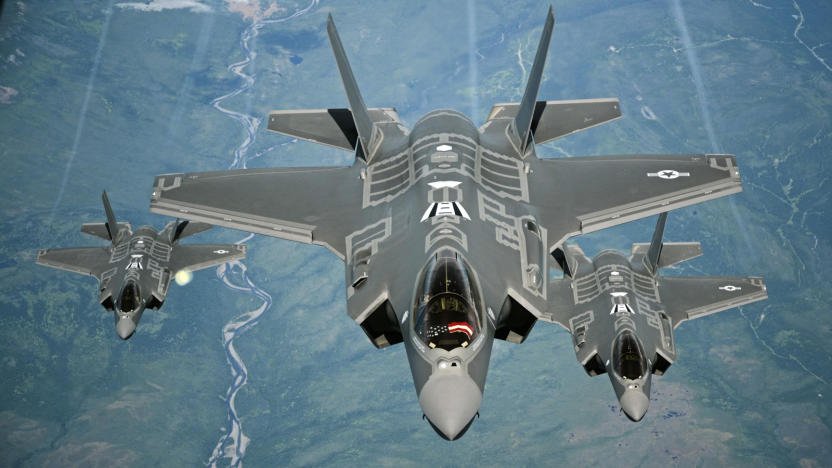
US Air Force says the F-35 is ready for combat
The F-35 Lightning II has faced more than a few technical problems and cost overruns in the 15 years since Lockheed Martin first won its production contract, but it's nearly done overcoming those hurdles. The US Air Force has declared that the F-35A (that is, the conventional takeoff model) is officially ready for combat. The first squadron to get the advanced jet, the 34th Fighter Squadron at Utah's Hill Air Force Base, can now deploy it on real-world missions if necessary.

Check out Lockheed Martin's robotic blimp inspector
Lockheed Martin's hybrid airships are as big as a football field, and it's a huge challenge making sure their surfaces are don't have tiny pinholes in them. That's why the company developed a robot called Self-Propelled Instrument for Damage Evaluation and Repair or SPIDER to crawl on the vehicle's surface and conduct autonomous inspections. The aerospace corporation developed SPIDER under its top secret Skunk Works division, which was also responsible for making its helium-filled hybrid blimps. It's composed of two magnetic parts that snap together: one goes outside the blimp's envelope (or its surface, which is made of special balloon fabric) and the other goes inside.
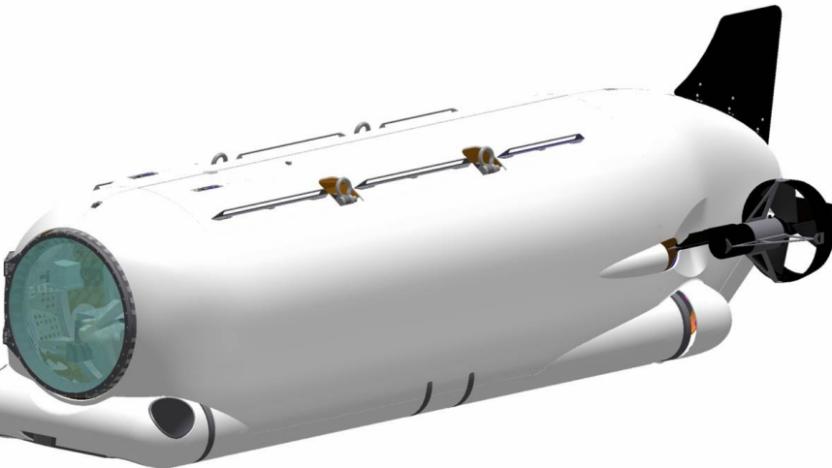
US Special Operations are getting a 'missile sub' delivery vehicle
Although Lockheed Martin has come under fire for the controversial F–35 fighter jet program, the aerospace company's Submergence Group just announced a $166 million defense contract with the US Special Operations Command to build a new "missile sub" meant to carry Navy SEAL and other special operations scuba divers into battle. Operated by a pilot and a navigator, the 30-ton Swimmer Delivery Vehicle will carry a team of six divers to an underwater location in a completely dry environment. Once the sub reaches its drop point, it can launch the dive team through an onboard airlock system.

ICYMI: VR Mars bus tour, self-assembling nanowire and more
#fivemin-widget-blogsmith-image-456992{display:none;} .cke_show_borders #fivemin-widget-blogsmith-image-456992, #postcontentcontainer #fivemin-widget-blogsmith-image-456992{width:570px;display:block;} try{document.getElementById("fivemin-widget-blogsmith-image-456992").style.display="none";}catch(e){}Today on In Case You Missed It: Lockheed Martin is encouraging kids to get into STEM with a Mars Experience Bus, with giant displays that look as though they're actually driving on the surface of Mars. Rice University created nanotubes that quickly self-assemble into nanowire. And Yamaha created an acoustic guitar that can store and loop back reverb and chorus sounds. We are also collectively irritated by the latest smart mattress with sensors inside, designed to catch your partner cheating, on your own mattress, when you're not at home. Ugh. As always, please share any great tech or science videos you find by using the #ICYMI hashtag on Twitter for @mskerryd.
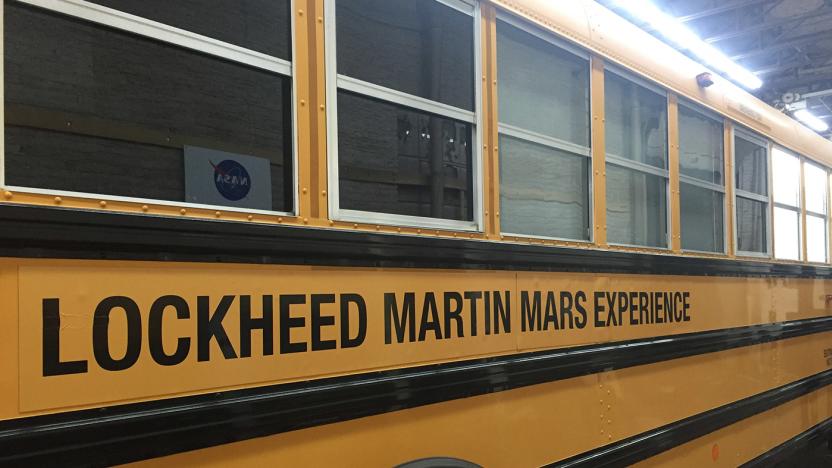
Lockheed Martin's school bus takes you on a ride across Mars
Lockheed Martin's Generation Beyond initiative aims to "inspire the next generation of innovators, explorers, inventors and pioneers to pursue STEM careers." And what better way to spark young students' curiosity than to give them ride on a bus that simulates a ride across the Martian surface? Passengers aboard the Mars Experience bus are treated to an immersive virtual reality adventure. As the bus moves, it makes the students feel like they're driving across the red planet by showing 200 square miles of its surface on the boarded-up windows.

Lockheed Martin's hypersonic aircraft plans are taking shape
For years, Lockheed Martin has been working on hypersonic (Mach 5 and above) aircraft like the SR-72, which could reach virtually any part of the world within a couple of hours. These vehicles have long been seen as distant prospects (the SR-72 might not reach service until 2030 at the earliest), but they now appear to be coming together. Lockheed tells the press that it expects to fly a demonstrator hypersonic aircraft "the size of an F-22" at a cost of less than $1 billion. That's no mean feat when some conventional programs cost more, and it's a hint that hypersonic technology is becoming a practical reality.
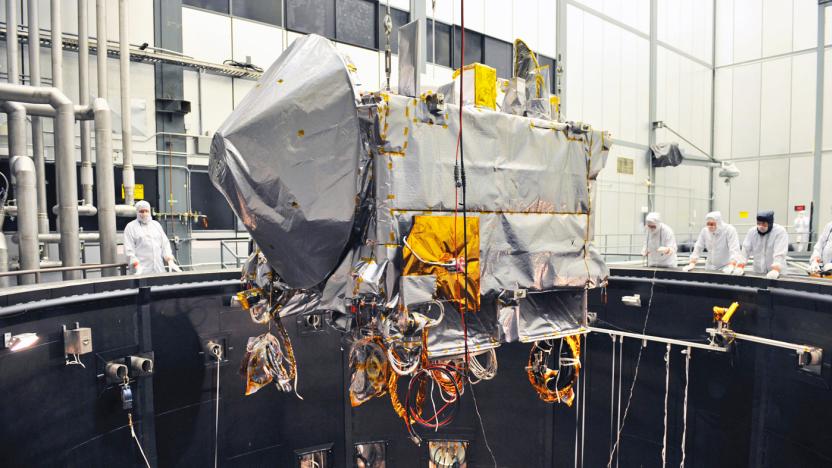
NASA's asteroid explorer faces tests that simulate space
Before NASA's OSIRIS-REx spacecraft can visit an asteroid to collect samples, it'll have to run a tough gauntlet. The probe is undergoing a 22-day thermal vacuum test that will see whether or not it can function in the unforgiving conditions of space. On top of working in an atmosphere-free environment, it'll face temperatures as cold as -274F and the periodic heat of a simulated Sun. So long as OSIRIS-REx makes the grade, it'll largely be ready for its September launch and the epic 7-year journey toward the asteroid Bennu.

ICYMI: Supersonic jetliner, the issue of sea sponge and more
#fivemin-widget-blogsmith-image-37467{display:none;} .cke_show_borders #fivemin-widget-blogsmith-image-37467, #postcontentcontainer #fivemin-widget-blogsmith-image-37467{width:570px;display:block;} try{document.getElementById("fivemin-widget-blogsmith-image-37467").style.display="none";}catch(e){}Today on In Case You Missed It: NASA gave Lockheed Martin $20 million to make a preliminary design of a supersonic jetliner that will break the sound barrier without a sonic boom. Stanford students are putting a self-driving Audi through a race course to improve AI algorithms. And MIT says it has found proof that sea sponges are the first animal on earth. Finally, Sweden's McDonald's has a new happy meal box that turns into a virtual reality headset. As always, please share any interesting science or tech videos, anytime! Just tweet us with the #ICYMI hashtag to @mskerryd.

NASA picks a supersonic jet design for its X-plane initiative
NASA has awarded a key contract for its New Aviation Horizons X-plane initiative, bringing supersonic passenger travel a step closer (back) to reality. The space agency will give Lockheed Martin $20 million to complete the preliminary design for its Quiet Supersonic Technology (QueSST). As that name suggests, the goal of the competition is to create a jet that can fly faster than sound without the normal sonic boom that can shatter windows in houses below. The teams are tasked instead with creating a sonic "heartbeat" that is more like a soft thump.

Lockheed Martin works on smaller, more powerful telescope tech
To make space telescopes more powerful, scientists would have to make their lenses larger. The bad news is it's not only tricky to make huge lenses (remember Hubble's spherical aberration?), it's also expensive to manufacture and ship them out to space. That's why Lockheed Martin is currently developing a technology that could lead to lighter, thinner and relatively cheaper alternative to the traditional two-lens telescope design. The tech called Segmented Planar Imaging Detector for Electro-optical Reconnaissance (or SPIDER) replaces the classic lenses with thousands of tiny ones.

Eight top-secret aircraft that definitely aren't UFOs
Since its establishment in 1955, the Groom Lake airfield at Edwards Air Force Base—better known as Area 51—has hosted the development of some of the most exotic and advanced aircraft the world has ever seen. These so-called black projects, named for their ultra-classified nature, have produced planes like the SR-71 Blackbird, which is still the fastest and highest-operating aircraft ever built (that we know about); the F-117 Nighthawk, the world's first stealth attack aircraft; and the RQ-170, a mysterious and seldom-seen aerial reconnaissance UAV.

Northrop Grumman lands USAF deal for new long-range strike bomber
Defense Secretary Ash Carter and Air Force Secretary Deborah Lee James announced on Tuesday that the DoD has awarded Northrop Grumman the lead contract for the US military's upcoming Long-Range Strike Bomber (LRSB). The contract is valued $60 billion, making it the single largest airframe contract since Lockheed won the deal for the $400 billion F-35 Joint Strike Fighter over a decade ago. At that price, the 21 airframes on order are expected to cost roughly $564 million apiece (in FY2016 dollars).

Authorities test autonomous helicopter's firefighting capabilities
Lockheed Martin's and Kaman's K-MAX helicopters are known for pilotlessly transporting cargo in Afghanistan, but it might soon be saving lives and nature in the US, as well. The companies have demonstrated an autonomous K-MAX with firefighting capabilities in front of federal officials on October 14th near Boise, Idaho. While there was a pilot onboard during the flight, he had his hands up most of the time, indicating that the aircraft can fly on its own. Within an hour-and-a-half, the chopper completed seven tasks, including scooping up water and dropping it on targets.




